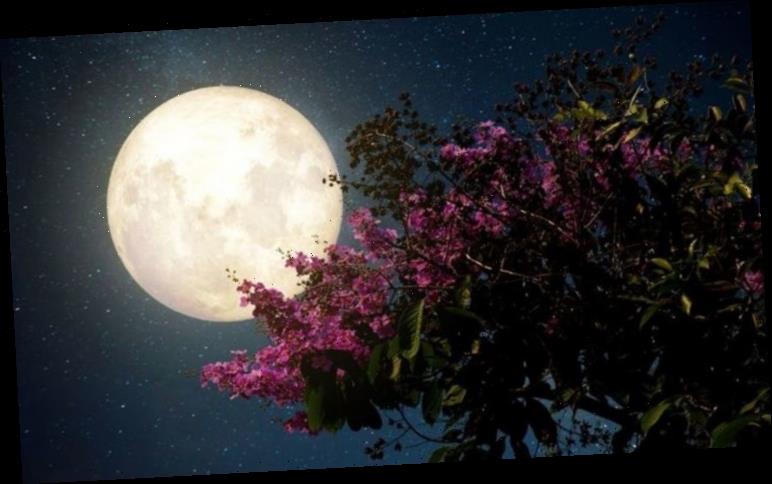May 7 will usher in another Full Moon, and this one is known as the Flower Moon. May’s full Moon has several names, all of which connect it to the fact it signifies spring, which are “flower moon”, “corn planting moon” or “milk moon” although the first is the most common.
NASA said on its website: “Going by the seasons, as the second full Moon of spring, the Native American tribes of the northeastern United States called this the Flower Moon, as flowers are abundant this time of year in most of these areas.”
According to the Old Farmers’ Almanac, Native American tribes endowed each full Moon with a name which represents the season or time of the year.
Royal Observatory Greenwich said: “The number of Moon names differs slightly from tribe to tribe, but many assign either 12 or 13 full moons to the year.
“These names were then adopted by the Colonial Americans and have entered popular culture; below you can see a few alternatives alongside the most popular names for each month’s full moon.”
Great Big Lockdown Survey: Tell us what life’s like for you by answering THESE questions
What is the spirtitual meaning of the Flower Moon?
Full Moons are commonly attributed to creating periods of high energy, but the Flower Moon is perceived to be a particularly ripe time for magical energy.
So those interested in the spiritual practice of using crystals and stones may benefit from using them during this May Full Moon period.
May is also traditionally associated with fertility and given the Full Flower Moon’s apparent magical qualities, some believe this Saturday (May 9) – the day of the Full Moon’s peak – is particularly advantageous for those trying to conceive.
Create your own survey at doopoll.co
The Moon will also be a Supermoon, making it the third of the year and thrice in as many months.
On average, the Moon is 238,000 miles from Earth, but during a Supermoon the can be 221,000 miles away from our planet.
This is because the Moon’s orbit is not a perfect circle and is actually slightly oval.
What are the full moons of 2020?
Here are all of the 13 named Full Moons you should look out for this year:
January 10 – Full Wolf Moon
February 9 – Full Snow Moon
March 9 – Full Worm Moon
April 8 – Full Pink Moon
May 7 – Full Flower Moon
June 5 – Full Strawberry Moon
July 5 – Full Buck Moon
August 3 – Full Sturgeon Moon
September 2 – Full Corn Moon
October 1 – Full Hunter’s Moon
October 31 – Blue Moon
November 30 – Full Beaver’s Moon
December 30 – Full Cold Moon
Source: Read Full Article



